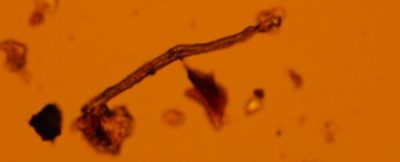Microplastics Found in Every Human Placenta Tested, Study Finds

All Global Research articles can be read in 51 languages by activating the Translate Website button below the author’s name (only available in desktop version).
To receive Global Research’s Daily Newsletter (selected articles), click here.
Click the share button above to email/forward this article to your friends and colleagues. Follow us on Instagram and Twitter and subscribe to our Telegram Channel. Feel free to repost and share widely Global Research articles.
Big Tech’s Effort to Silence Truth-tellers: Global Research Online Referral Campaign
***
It’s been over three years since scientists first found microplastics swimming in four different human placentas, and as it turns out, that was just the tip of the iceberg.
A few years later, at the start of 2023, researchers announced they had found microscopic particles of plastic waste in no fewer than 17 different placentas. By the end of 2023, a local study in Hawai’i analyzed 30 placentas that were donated between 2006 and 2021 only to find plastic contamination had increased significantly over time.
Using a new technique, researchers have now identified tiny particles and fibers of plastic less than a micron in size in the largest sample of placentas yet.
In all 62 tissue samples studied, the team found microplastics of various concentrations in every single one. These concentrations ranged from 6.5 to 685 micrograms per gram of tissue, which is much higher than levels found in the human bloodstream.
No one yet knows what this plastic pollution is doing – if anything – to the health of the fetus or the mother. While microplastics have been found in every major organ of the human body, including the brain, it’s unknown if these pollutants are temporary visitors or permanent and accumulating threats to health.
As environmental plastic pollution continues to worsen, contamination of the placenta is on track to only increase, as humans breathe in and ingest more plastic than ever before.
“Dose makes the poison,” explains biologist Matthew Campen from the University of New Mexico.
“If the dose keeps going up, we start to worry. If we’re seeing effects on placentas, then all mammalian life on this plant could be impacted. That’s not good.”
Determining how much microplastics are accumulating in human tissue has proved extremely difficult given the very small size of these particles.
For years now, scientists have been working on a solid detection method that can quantify the mass of these pollutants and determine their specific brand of plastic. Only then can the impact on health be properly evaluated.
The new study uses a novel, high resolution technique to scan for plastics in human blood and tissue. First, researchers separated the majority of biological material from plastic solids, using chemicals and extremely high speed ultracentrifuges to separate very small molecules. Then, they broke down the polymers to determine their specific compounds.
When applied to the 62 placenta samples the technique revealed that more than half of all plastics found in placenta are polyethylene – the most commonly produced plastic on our planet, responsible for most single-use bags and bottles.
Other plastic particles identified in the placenta include polyvinyl chloride, nylon, and polypropylene, all of which are probably several decades old, having been weathered and oxidized for years in the environment before being inhaled or ingested by humans.
“This method,” the authors of the study argue, “paired with clinical metadata, will be pivotal to evaluating potential impacts of nano MPs on adverse pregnancy outcomes.”
So far, clinical studies on the effects of plastic pollution are few and far between. Early research suggests that the smaller plastic pollutants are, the more easily they can invade cells. And yet at this miniscule size it is harder to determine their potentially toxic effects.
In research on mini-models of the human intestine, microplastics show potentially dangerous immune effects. What’s more, early experiments on mice suggest that micro- and nanoplastics have the “potential to disrupt fetal brain development, which in turn may cause suboptimal neurodevelopmental outcomes.”
The reasons for the wide range of microplastic concentrations found in human organs, including the placenta, is currently unknown. It could be due to analytical error, or, researchers say, it could be due to “a combination of environmental, dietary, genetic, maternal age, and lifestyle factors.”
“The factors that drive such extreme concentration ranges are not known, nor is it apparent if such concentrations contribute negatively to growth and development of the placenta or fetus, or to other maternal health consequences,” add the researchers.
“The placenta receives relatively high blood flow and takes up a great deal of nutrients from the maternal blood, which might make it more highly exposed; the extent to which nano- and microplastic pollution can be carried across the complex placental barrier, either passively or actively requires further investigation.’
The study was published in Toxicological Sciences.
*
Note to readers: Please click the share button above. Follow us on Instagram and Twitter and subscribe to our Telegram Channel. Feel free to repost and share widely Global Research articles.

